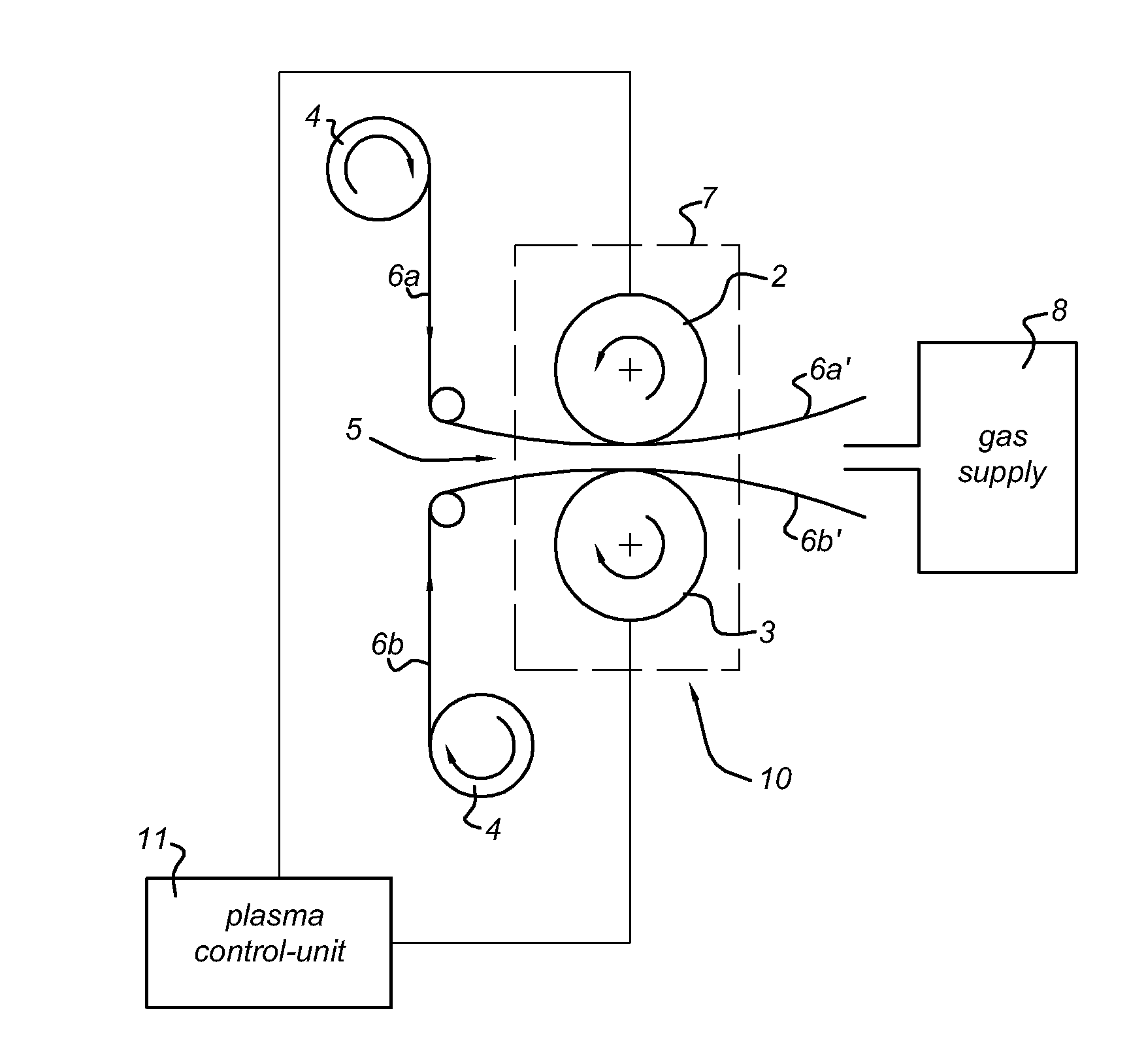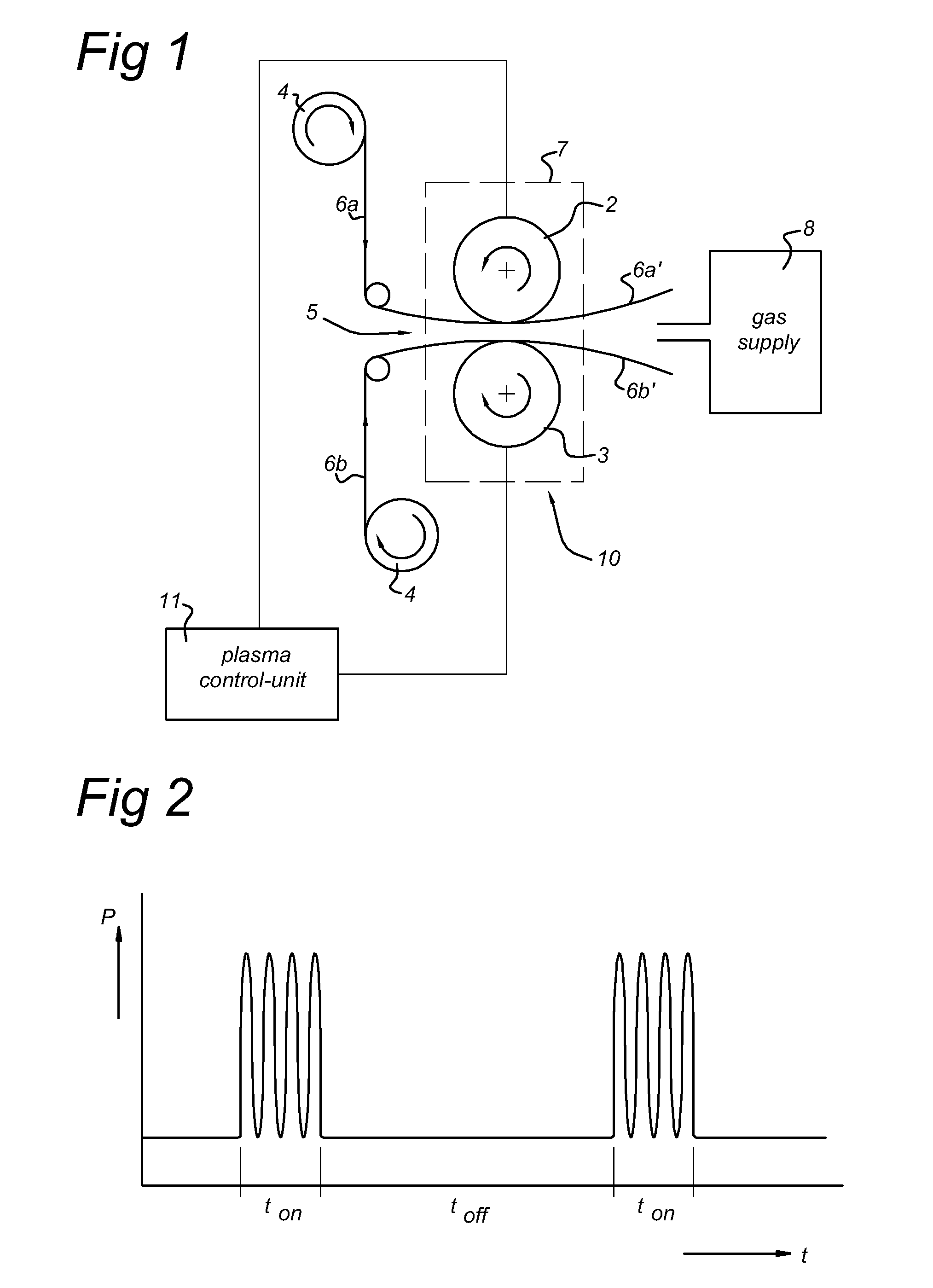Method for manufacturing a multi-layer stack structure with improved WVTR barrier property
a technology of stack structure and barrier property, which is applied in the field of manufacturing multi-layer stack structure, can solve the problems of deformation of liquid crystal in liquid crystal cell, poor gas barrier property, and display failure of degraded parts, and achieve excellent barrier property to water vapour, efficient and cheap process, and good gas barrier property
- Summary
- Abstract
- Description
- Claims
- Application Information
AI Technical Summary
Benefits of technology
Problems solved by technology
Method used
Image
Examples
examples
[0072]As a substrate material 6a, 6b optical grade PEN was used having a thickness of 90 micron. WVTR of the PEN substrate without coating was quantified by Mocon Aquatran and is typically 0.27+ / −0.03 g / m2·day.
example 1
[0077]Two barrier films 14 of 50 nm thick are deposited synchronously using the electrode set-up as shown in FIG. 1 using an atmospheric pressure plasma device 10. On both sides of the substrates 6a, 6b facing the plasma discharge a SiOx layer 14 is deposited. Directly, after depositing the inorganic layer 14 the two substrates 6a′, 6b′ are brought together and laminated with the same hydrophobic acrylate as above with a thickness of 10 micron followed by UV-curing. Under the same conditions more barrier samples are produced and part of this material is prepared for permeability characterization by Mocon.
[0078]The WVTR of the individual layers 6a′, 6b′ is typically 0.03 g / m2·day, whereas the permeability of the laminate structure 12 is typically less than 1*10−3 g / m2·day.
example 2
[0079]Two barrier films 14 of 100 nm thick are deposited in one time using the electrode set-up as shown in FIG. 1. On both sides of the substrates 6a, 6b facing the plasma discharge a SiOx layer 14 is deposited. Directly, after depositing the inorganic layer 14 the two substrates 6a′, 6b′ are brought together and laminated using the same thickness and same acrylate layer 15.
[0080]Under same conditions more barrier samples are produced, part of this material is sampled for permeability characterization by Mocon.
[0081]WVTR of the individual layers 6a′, 6b′ is typically 0.03 g / m2·day, whereas the permeability of the laminate structure 12 is below the detection limit of the Mocon Aquatran.
[0082]Subsequently, the permeability is characterized by the calcium corrosion test. This method allows characterization of the average WVTR as low as 10−5 to 10−6 g / m2·day at 40° C. / 90% RH. The WVTR for the multi-layer stack structure 12 was found to be typically in the order of 10−4 g / m2·day.
[0083]M...
PUM
 Login to View More
Login to View More Abstract
Description
Claims
Application Information
 Login to View More
Login to View More - R&D
- Intellectual Property
- Life Sciences
- Materials
- Tech Scout
- Unparalleled Data Quality
- Higher Quality Content
- 60% Fewer Hallucinations
Browse by: Latest US Patents, China's latest patents, Technical Efficacy Thesaurus, Application Domain, Technology Topic, Popular Technical Reports.
© 2025 PatSnap. All rights reserved.Legal|Privacy policy|Modern Slavery Act Transparency Statement|Sitemap|About US| Contact US: help@patsnap.com



